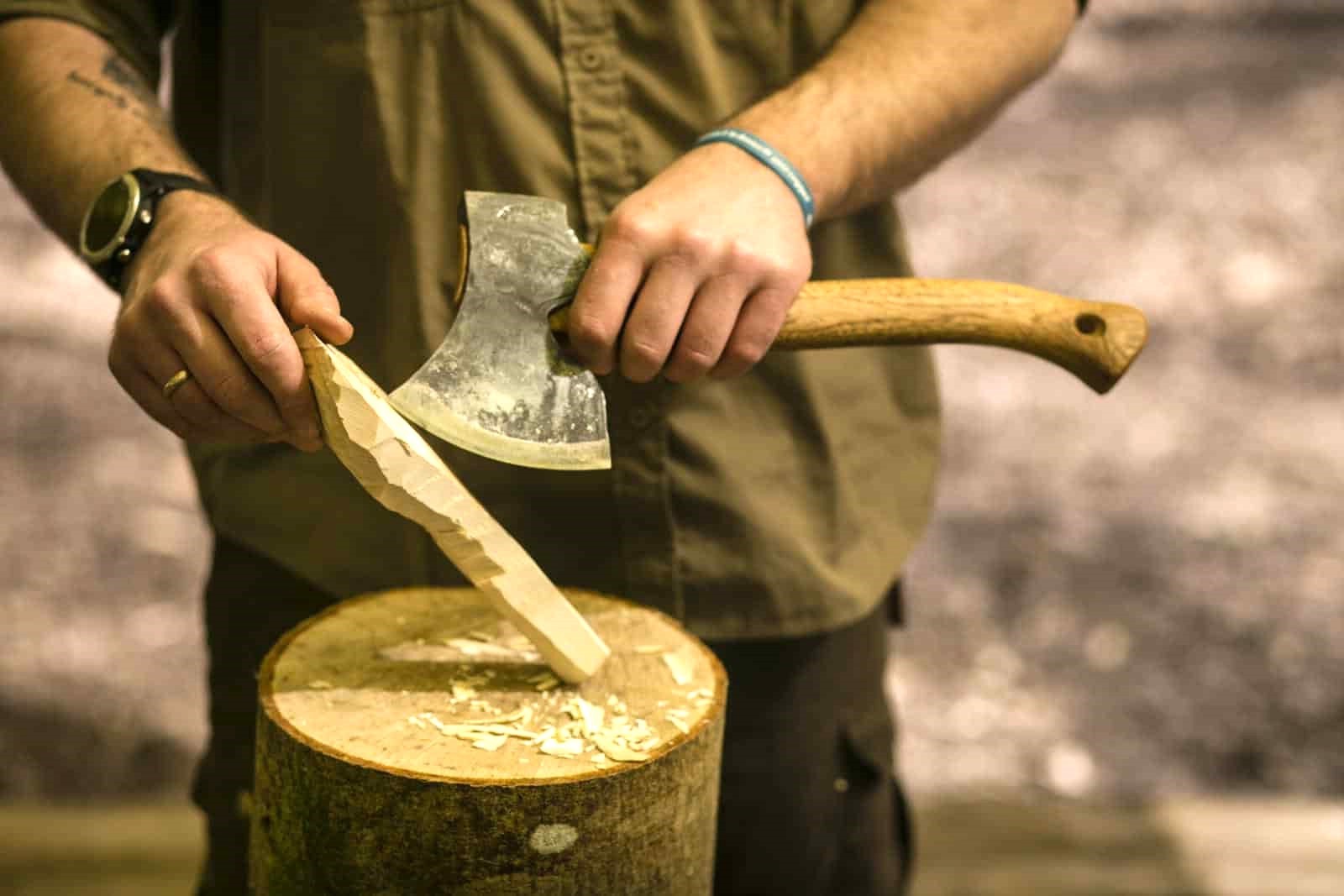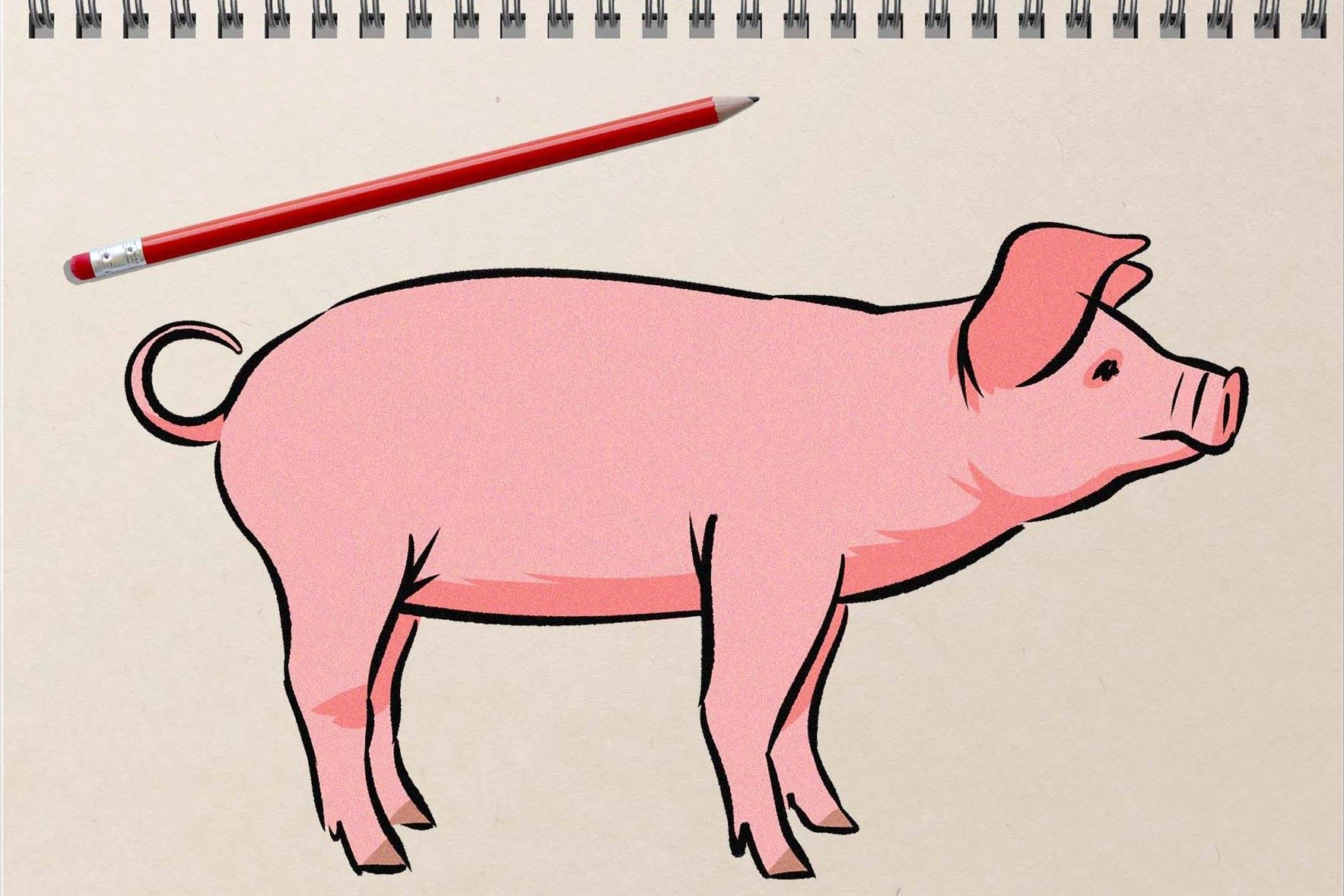Home>Home and Garden>How To Sharpen An Axe


Home and Garden
How To Sharpen An Axe
Published: March 3, 2024
Learn the best techniques for sharpening an axe at home and improve your gardening and woodworking skills. Discover the essential tools and step-by-step instructions.
(Many of the links in this article redirect to a specific reviewed product. Your purchase of these products through affiliate links helps to generate commission for Noodls.com, at no extra cost. Learn more)
Table of Contents
Introduction
Sharpening an axe is a crucial skill for anyone who values the efficiency and safety of their cutting tools. Whether you're an outdoor enthusiast, a seasoned woodsman, or a homeowner with a penchant for DIY projects, knowing how to sharpen an axe can significantly enhance its cutting performance and prolong its lifespan.
A dull axe not only makes the task at hand more laborious but also poses a safety hazard. A sharp axe, on the other hand, allows for cleaner cuts, reduces the effort required to chop wood, and minimizes the risk of accidents. By maintaining a keen edge on your axe, you ensure that it remains a reliable and effective tool for various tasks, from splitting firewood to clearing brush.
In this comprehensive guide, we will walk you through the step-by-step process of sharpening an axe, covering everything from essential safety precautions to the tools and techniques required for achieving a razor-sharp edge. Whether you're a novice or an experienced hand, this guide will equip you with the knowledge and skills needed to keep your axe in prime cutting condition.
So, grab your axe, gather your tools, and let's delve into the art of axe sharpening. With the right approach and a bit of practice, you'll soon be wielding a finely honed axe that's ready to tackle any cutting challenge with precision and ease.
Read more: How To Sharpen Hedge Trimmers
Safety Precautions
Before embarking on the axe sharpening process, it's crucial to prioritize safety. Working with sharp tools demands a cautious approach to minimize the risk of accidents. Here are essential safety precautions to observe:
-
Wear Protective Gear: Prior to sharpening your axe, don appropriate safety gear, including safety goggles to shield your eyes from metal shavings and debris, and heavy-duty gloves to protect your hands from the sharp blade and potential cuts.
-
Secure the Work Area: Choose a well-lit and spacious work area, preferably with a sturdy workbench or table. Ensure that the surface is clean, stable, and free from clutter to prevent any tripping hazards or accidental slips.
-
Stable Axe Positioning: When securing the axe for sharpening, use a reliable vice or clamp to hold it firmly in place. This prevents the axe from moving during the sharpening process, reducing the risk of injuries caused by unexpected movements.
-
Mindful Handling of Sharpening Tools: Exercise caution when handling sharpening tools such as files and honing stones. These tools have sharp edges and should be handled with care to avoid accidental cuts or injuries.
-
Proper Technique: Familiarize yourself with the correct sharpening technique to minimize the risk of mishaps. Always maintain a steady and controlled motion while sharpening the axe, avoiding any sudden or erratic movements that could lead to accidents.
-
Mindful Disposal of Debris: As you sharpen the axe, metal shavings and debris will accumulate. Dispose of these carefully to prevent injuries. Use a brush or cloth to clear away the shavings, ensuring that they are safely discarded in a designated container.
By adhering to these safety precautions, you can create a secure environment for sharpening your axe, reducing the likelihood of accidents and ensuring a smooth and incident-free sharpening process. Remember, safety should always be the top priority when working with sharp tools.
Tools and Materials Needed
To embark on the journey of sharpening your axe, you'll need a few essential tools and materials to ensure a successful and efficient sharpening process. Here's a comprehensive list of what you'll need:
Tools:
-
File: A high-quality, double-cut mill file is essential for removing nicks and reshaping the blade's edge. Choose a file with a handle for a comfortable grip and precise control during sharpening.
-
Honing Stone: Also known as a sharpening stone, this tool is crucial for refining the axe's edge to achieve a razor-sharp finish. Select a honing stone with a fine grit to effectively hone the blade.
-
Vice or Clamp: A sturdy vice or clamp is necessary to secure the axe firmly in place during sharpening. This ensures stability and prevents the axe from moving, allowing for safe and effective sharpening.
-
Safety Gear: Prioritize safety by wearing protective gear, including safety goggles to shield your eyes from metal shavings and debris, and heavy-duty gloves to safeguard your hands from the sharp blade and potential cuts.
-
Brush or Cloth: A brush or cloth will be handy for clearing away metal shavings and debris that accumulate during the sharpening process. This helps maintain a clean work area and prevents injuries caused by scattered debris.
Materials:
-
Lubricant or Oil: Using a lubricant such as honing oil or mineral oil on the honing stone helps facilitate smooth and consistent sharpening. It also prevents the build-up of metal particles on the stone, prolonging its effectiveness.
-
Rag: Keep a clean rag or cloth nearby to wipe down the axe and remove any excess oil or debris after sharpening.
-
Workbench or Table: Choose a well-lit and spacious work area with a sturdy workbench or table. A clean, stable surface is essential for a safe and organized sharpening process.
By gathering these tools and materials, you'll be well-equipped to embark on the axe sharpening journey with confidence. These essentials will not only facilitate the sharpening process but also contribute to a safe and efficient experience, ensuring that your axe emerges with a keen and durable edge ready for any cutting task.
Read more: How To Sharpen Hair Clippers
Step 1: Inspect the Axe
Before diving into the sharpening process, it's essential to conduct a thorough inspection of your axe. This step allows you to assess the condition of the blade, identify any damage or wear, and determine the extent of sharpening required. Here's a detailed breakdown of the inspection process:
Check for Damage:
Begin by carefully examining the axe blade for any visible signs of damage, such as chips, dents, or excessive wear. These imperfections can impact the effectiveness of the sharpening process and may require additional attention. If significant damage is detected, it's advisable to address these issues before proceeding with sharpening.
Assess Blade Condition:
Evaluate the overall condition of the blade, paying close attention to the edge. Look for dullness, uneven wear, or areas where the edge has become rounded or nicked. Understanding the current state of the blade will guide your approach to sharpening and help determine the level of restoration needed.
Identify Rust or Corrosion:
Inspect the blade for any signs of rust or corrosion, especially along the cutting edge and the blade's surface. Rust can hinder the sharpening process and compromise the axe's structural integrity. If rust is present, it's crucial to address it before proceeding with sharpening to ensure optimal results.
Evaluate Handle Integrity:
While focusing on the blade, take a moment to assess the condition of the axe handle. Check for cracks, splinters, or any signs of weakness that may require attention. A sturdy and well-maintained handle is essential for safe and effective axe usage.
Measure Blade Angle:
If possible, determine the existing angle of the blade's edge. This measurement can guide the sharpening process, ensuring that the original cutting angle is maintained or adjusted as needed for optimal cutting performance.
By meticulously inspecting your axe, you gain valuable insights into its current state and can tailor the sharpening process to address specific concerns. This proactive approach sets the stage for a successful and tailored sharpening experience, ultimately leading to a finely honed axe that's primed for peak performance.
Step 2: Secure the Axe
Securing the axe is a critical preparatory step that ensures stability and safety during the sharpening process. By firmly immobilizing the axe, you create a controlled environment for precise sharpening, minimizing the risk of accidents and achieving consistent results. Here's a detailed guide on how to securely position the axe for sharpening:
Select a Suitable Work Surface:
Begin by choosing a well-lit and spacious work area with a sturdy workbench or table. The surface should provide ample space for maneuvering the axe and sharpening tools while offering a stable foundation for the sharpening process.
Read more: How To Say “How You Say” In Spanish
Positioning the Axe:
Place the axe on the work surface with the blade facing upward. Ensure that the handle extends beyond the edge of the work surface, allowing ample space for maneuvering the sharpening tools without obstruction.
Use a Vice or Clamp:
Secure the axe in a reliable vice or clamp, ensuring that it is firmly held in place. Position the axe so that the blade is accessible for sharpening while the handle remains securely immobilized. Tighten the vice or clamp to prevent any movement during the sharpening process, maintaining stability and control.
Maintain Stability:
Check the axe to ensure that it is securely positioned and that the blade is held at the desired angle for sharpening. Stability is crucial for achieving consistent and uniform sharpening results, so take the time to confirm that the axe is firmly secured before proceeding.
Safety Considerations:
As you secure the axe, be mindful of safety precautions. Avoid placing your hands near the blade's edge while positioning the axe, and ensure that the vice or clamp is tightened securely to prevent any unexpected movement during sharpening.
By following these steps to secure the axe, you establish a safe and controlled environment for the sharpening process. This meticulous approach sets the stage for precise and effective sharpening, allowing you to focus on honing the axe's edge with confidence and ensuring that it emerges with a keen and durable cutting edge.
Read more: The Hidden Meaning Behind “How’s It Going?”
Step 3: File the Blade
Filing the blade is a fundamental step in the axe sharpening process, focusing on reshaping the edge and removing any nicks or imperfections. This meticulous technique is essential for restoring the blade's sharpness and ensuring optimal cutting performance. Here's a comprehensive guide on how to effectively file the axe blade:
Select the Right File:
Begin by choosing a high-quality, double-cut mill file that is suitable for sharpening an axe. The file should feature a comfortable handle for a secure grip and precise control during the filing process. Ensure that the file's teeth are sharp and free from damage, as a well-maintained file is crucial for achieving consistent and effective results.
Positioning the File:
Hold the file firmly in both hands, maintaining a steady grip and a controlled posture. Position yourself comfortably to ensure that you have a clear view of the blade and can apply consistent pressure while filing. The file should be aligned parallel to the blade's edge, allowing for smooth and uniform filing motions.
Filing Technique:
With the axe securely positioned and the file in hand, begin filing the blade using long, smooth strokes. Apply even pressure along the entire length of the blade, moving the file in a consistent motion from the base of the blade to the tip. Focus on removing any nicks, dents, or irregularities while maintaining a steady filing angle to achieve a uniform edge.
Read more: How To Be Cool
Check Progress Regularly:
Periodically pause to assess the progress of the filing process. Inspect the blade for signs of improvement, ensuring that the edge is gradually taking on a sharper and more refined appearance. Pay close attention to areas that require additional filing and adjust your technique as needed to achieve a consistent edge along the entire blade.
Maintain a Balanced Approach:
While filing, strive for a balanced approach to ensure that the blade's edge retains its original angle and symmetry. Avoid applying excessive force or uneven pressure, as this can lead to an irregular edge and compromise the axe's cutting performance. Consistency and precision are key to achieving a well-filed and sharp blade.
Repeat as Needed:
Continue filing the blade until you have achieved a uniform and sharp edge. If necessary, revisit areas that require additional attention, focusing on refining the blade's profile and eliminating any remaining imperfections. A thorough and meticulous filing process is essential for preparing the blade for the honing stage.
By following these detailed steps for filing the axe blade, you lay the foundation for a finely honed edge that is ready for the subsequent honing and testing stages. This methodical approach ensures that the blade receives the attention it needs to regain its sharpness and cutting prowess, setting the stage for a successful axe sharpening experience.
Step 4: Hone the Edge
After filing the axe blade to remove imperfections and establish a basic edge, the next crucial step is honing. Honing the edge is essential for refining the blade's sharpness and achieving a razor-sharp finish that enhances the axe's cutting performance. This meticulous process involves using a sharpening or honing stone to further refine the blade's edge, ensuring that it is keen, durable, and ready for a wide range of cutting tasks.
Read more: How To Be A Baddie
Select the Right Honing Stone:
Begin by choosing a high-quality honing stone with a fine grit that is suitable for sharpening an axe. The honing stone should be compatible with the size and curvature of the axe blade, allowing for smooth and consistent honing motions. Prioritize a stone that is well-maintained and free from damage, as its condition directly impacts the honing process and the resulting edge sharpness.
Lubricate the Honing Stone:
Before commencing the honing process, apply a small amount of honing oil or mineral oil to the surface of the honing stone. This lubrication facilitates smooth and controlled sharpening, reducing friction and preventing the accumulation of metal particles on the stone. Proper lubrication ensures that the honing stone remains effective throughout the sharpening process, contributing to the refinement of the blade's edge.
Positioning and Angle:
Hold the axe securely with the blade facing upward, ensuring that it remains firmly immobilized during the honing process. Position the honing stone against the blade's edge at the appropriate angle, typically matching the existing cutting angle or adjusting as needed for optimal sharpness. Maintain a steady grip on the honing stone and the axe, preparing to execute precise and controlled honing motions.
Hone with Consistent Strokes:
With the honing stone in position, begin honing the blade using consistent and controlled strokes. Apply even pressure along the entire length of the blade, moving the honing stone in a smooth and deliberate motion from the base to the tip. Focus on refining the edge, gradually enhancing its sharpness and ensuring that it remains uniform and well-defined.
Read more: How To Draw A Sunset
Check Sharpness and Progress:
Periodically pause to assess the sharpness and progress of the honing process. Inspect the blade's edge for signs of improvement, ensuring that it is gradually taking on a finer and more polished appearance. Pay close attention to areas that require additional honing and adjust your technique as needed to achieve a consistent and razor-sharp edge.
Repeat for Optimal Sharpness:
Continue honing the blade until you have achieved a refined and razor-sharp edge. If necessary, revisit areas that require additional attention, focusing on enhancing the blade's sharpness and ensuring that it is uniformly honed. A thorough honing process is essential for elevating the blade's cutting prowess and preparing it for the final testing stage.
By following these detailed steps for honing the axe blade, you refine the edge to a razor-sharp finish, ensuring that it is primed for optimal cutting performance. This meticulous approach sets the stage for a finely honed axe that is ready to tackle a myriad of cutting tasks with precision and ease.
Step 5: Test the Sharpness
After diligently filing and honing the axe blade, it's essential to assess the sharpness of the edge to ensure that it meets the desired standard for cutting performance. Testing the sharpness provides valuable insights into the effectiveness of the sharpening process and allows for any final adjustments to be made before putting the axe to use. Here's a detailed guide on how to test the sharpness of the axe blade:
Visual Inspection:
Begin by visually inspecting the blade's edge under adequate lighting. Look for a consistent and uniform edge that appears smooth and free from irregularities. A well-sharpened blade will exhibit a clean and defined edge, reflecting the meticulous filing and honing efforts. Pay close attention to the entire length of the blade, ensuring that the sharpness extends from the base to the tip.
Read more: How To Tie A Shemagh
Paper Test:
One effective method for testing the sharpness of the axe blade is the paper test. Obtain a piece of standard printer paper or newspaper and hold it taut with one hand. With the other hand, carefully draw the blade across the paper, applying minimal pressure. A sharp blade will effortlessly slice through the paper, producing clean and precise cuts. If the blade struggles to cut or tears the paper, it may require further honing to achieve optimal sharpness.
Wood Shaving Test:
Another practical way to assess the sharpness of the axe blade is by performing a wood shaving test. Secure a piece of wood, such as a softwood board, and position it on a stable surface. Using controlled and deliberate strokes, attempt to shave thin strips of wood from the board with the axe. A sharp blade will effortlessly produce fine and consistent wood shavings, indicating its readiness for cutting tasks. If the blade struggles to shave wood or produces uneven shavings, additional honing may be necessary to refine the edge further.
Edge Reflection:
Examine the blade's edge for reflections of light. A well-sharpened edge will exhibit a consistent and reflective surface, indicating a uniform and keen edge. Tilt the blade at different angles to observe how light interacts with the edge, ensuring that it maintains a sharp and polished appearance. This visual assessment provides valuable feedback on the blade's sharpness and uniformity.
Fine-Tuning if Needed:
Based on the results of the sharpness tests, make any necessary adjustments to further refine the blade's edge. If the blade demonstrates optimal sharpness and cutting performance, it is ready for use in various cutting tasks. However, if the tests reveal areas that require improvement, revisit the honing process to address specific areas and achieve the desired level of sharpness.
By meticulously testing the sharpness of the axe blade, you ensure that it is primed for peak cutting performance. This thorough assessment provides valuable feedback on the effectiveness of the sharpening process and allows for any final adjustments to be made, ultimately resulting in a finely honed axe that is ready to tackle a myriad of cutting tasks with precision and ease.
Read more: How To Unclog A Cart
Conclusion
In conclusion, mastering the art of sharpening an axe is a valuable skill that empowers individuals to maintain their cutting tools in prime condition, ensuring optimal performance and safety. Throughout this comprehensive guide, we have delved into the intricacies of axe sharpening, covering essential safety precautions, the tools and materials needed, and a step-by-step sharpening process. By following these detailed instructions, enthusiasts and professionals alike can elevate their axe sharpening proficiency, resulting in finely honed blades that are ready for a diverse range of cutting tasks.
The journey of axe sharpening begins with a keen focus on safety, emphasizing the importance of protective gear, a secure work area, and mindful handling of sharpening tools. Prioritizing safety not only minimizes the risk of accidents but also fosters a conducive environment for a successful sharpening experience.
Equipped with the necessary tools and materials, individuals can embark on the axe sharpening process with confidence, knowing that they have the essential components to facilitate a thorough and effective sharpening session. From files and honing stones to safety gear and work surfaces, these resources form the foundation for a meticulous and rewarding sharpening endeavor.
The step-by-step approach outlined in this guide, from inspecting the axe and securing it for sharpening to filing the blade, honing the edge, and testing the sharpness, provides a comprehensive roadmap for achieving a finely honed axe. Each stage of the sharpening process contributes to the restoration and enhancement of the blade's cutting prowess, ensuring that it emerges with a keen and durable edge.
By meticulously inspecting the axe, securing it for sharpening, filing the blade to remove imperfections, honing the edge to a razor-sharp finish, and testing the sharpness through practical assessments, individuals can elevate their axe sharpening proficiency. This methodical approach not only enhances the cutting performance of the axe but also fosters a deeper appreciation for the craftsmanship and maintenance of cutting tools.
Ultimately, the art of axe sharpening transcends the physical act of honing a blade; it embodies a commitment to craftsmanship, safety, and the preservation of a timeless skill. With the knowledge and skills gained from this guide, individuals can confidently sharpen their axes, ensuring that these indispensable tools remain reliable companions for a myriad of cutting tasks, from woodworking and outdoor pursuits to everyday DIY projects.
In mastering the art of axe sharpening, individuals embrace a tradition of craftsmanship and resourcefulness, ensuring that their axes are always primed for precision and efficiency. Whether it's preparing firewood for a cozy evening by the fireplace or embarking on outdoor adventures, a finely honed axe stands as a testament to the dedication and skill of its caretaker.






